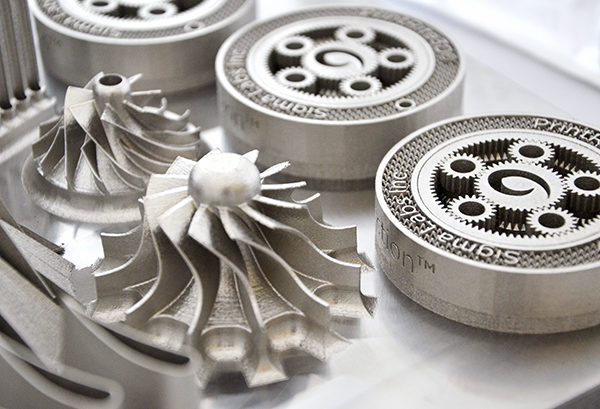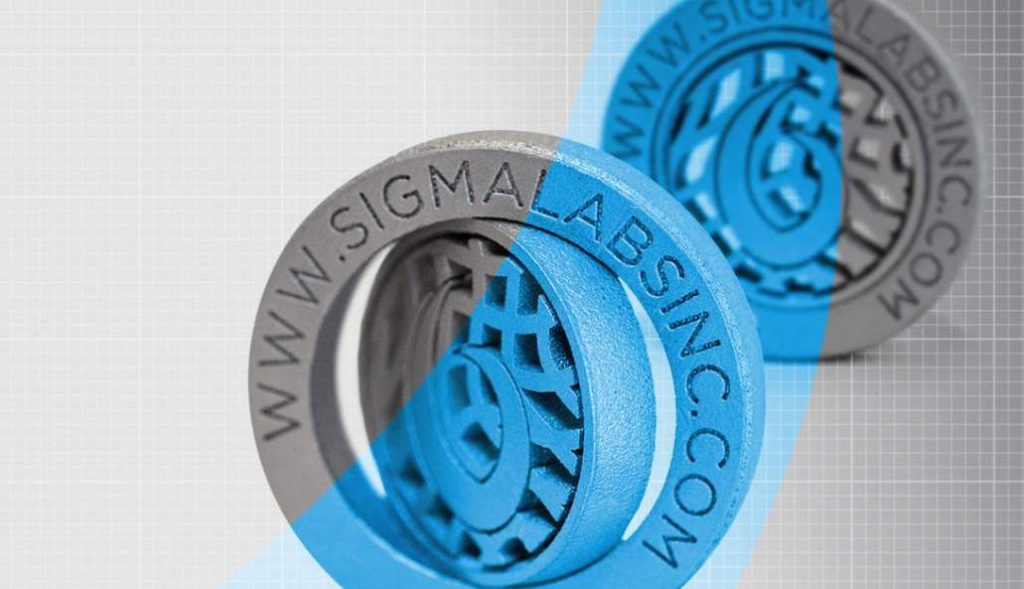Sigma Labs has announced the availability of its PrintRite3D in-process monitoring system for polymer 3D printers for the first time.
Previously only compatible with metal machines, the firm’s quality assurance platform allows users to collect and analyze real-time data, as a means of identifying and averting manufacturing anomalies. Now the system is usable with polymer Selective Laser Sintering (SLS) systems as well, Sigma Labs’ CEO Mark Ruport says that it could be applied on a much grander scale than before.
“PrintRite3D now provides a consistent way to monitor production real-time across 3D printers from different manufacturers, supporting different processes, and now multiple types of materials,” said Ruport. “This breakthrough will enable large global manufacturers to manage the quality and consistency of parts manufactured in-house, by contract manufacturers, and throughout their supply chain.”

Quality assurance at scale
Effectively composed of hardware and software tracking modules, PrintRite3D represents Sigma Labs’ main product offering. Marketed as an In-Process Quality Assurance or ‘IPQA’ system, the platform combines real-time data collection with critical analysis to uncover part defects, before using machine learning to map how these might have developed.
In doing so, the system allows users to not only avoid failed prints and improve their part throughput, but create a product certification framework that meets the needs of both end users and standards organizations. PrintRite3D is also ‘platform-independent,’ thus it can be utilized on any third-party Directed Energy Deposition (DED) system, and retrofitted to scale existing dual and quad-laser setups.
Earlier this year, Sigma Labs revealed that it had been contracted by DMG MORI to use its technology as a basis for building a melt pool monitoring system for the firm’s LASERTEC SLM machines, in addition to Lockheed Martin, which has unveiled plans to deploy PrintRite3D in various defense and civil aviation programs as well.
However, despite the ongoing adoption of its platform within such technologically-advanced industries, Sigma Labs’ revenue remains low compared to some of its 3D printing software peers, and it generated just $700,000 in Q3 2021, thus its decision to introduce PrintRite3D into polymer production could be seen as a move to broaden its market base.

Sigma Labs’ SLS opportunity?
According to Sigma Labs, SLS is “an established technology” with an increasing number of “production applications in regulated industries.” To help the technology meet this growing appetite for a workflow that can be scaled while meeting rising product quality demands, the firm has therefore updated its PrintRite3D system to make it SLS-compatible.
In effect, Sigma Labs has managed to achieve this by tweaking its platform’s software element, so that it’s capable of translating the signatures of SLS-radiated emissions in a way that enables the real-time monitoring of polymer prints, and provides OEMs with the ability to rapidly identify defects and deliver parts with greater quality assurance.
Citing the research of consultancy firm AMPOWER, Sigma Labs says the industrial polymer market is around 2.5 times the size of its metal counterpart, with 35% of systems being sold in the U.S. As a result, the firm sees polymer 3D printing as a lucrative potential sector for it to expand into, especially given that AMPOWER has found the tech’s adoption to be growing in healthcare, aviation and automotive.
Although Ruport says it’s currently “difficult to quantify the size of the market opportunity,” Sigma Labs has already gained two PrintRite3D orders from SLS customers, which he has branded “a fantastic first step into the polymer segment of the market, that demonstrates the need to ensure the quality and consistency of 3D printed parts.”

AI-powered quality control
The rise of AI and machine learning quality control systems has been a feature of the 3D printing industry in recent years, as they begin to offer manufacturers a means of scaling while avoiding costly product defects. Authentise, with its Manufacturing Execution System (MES), offers an alternative to PrintRite3D, that since last year, has featured Addiguru in-situ monitoring functionality.
At Oak Ridge National Laboratory, researchers have also developed a novel AI-powered metal 3D printing monitoring software. Known as ‘Peregrine,’ the algorithm is programmed to track parts during production in a cost-efficient manner, and with further R&D, the team says it could even be used as a quality control method for self-correcting machines.
Elsewhere, in the field of material jetting, a team at Lawrence Livermore National Laboratory have come up with a unique 3D printing diagnostic tool. Designed to serve as a cheaper alternative to high-speed videography monitoring, the engineers’ approach has seen them focus on optimizing one system parameter at a time, in a way that enables them to “guarantee part quality” during production.
To stay up to date with the latest 3D printing news, don’t forget to subscribe to the 3D Printing Industry newsletter or follow us on Twitter or liking our page on Facebook.
For a deeper dive into additive manufacturing, you can now subscribe to our Youtube channel, featuring discussion, debriefs, and shots of 3D printing in-action.
Are you looking for a job in the additive manufacturing industry? Visit 3D Printing Jobs for a selection of roles in the industry.
Featured image shows a set of 3D printed metal parts that have been quality-inspected by the PrintRite3D platform. Photo via Sigma Labs.


